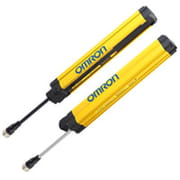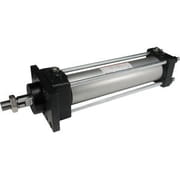The life sciences industry covers a broad spectrum of individual sub-industries, all of which are united by their commitment to meeting human health needs and their commitment to impeccable accuracy. From clinical diagnostics to medical device manufacturing, regulatory oversight is growing in tandem with the amount of automation employed.
Patient safety is at the heart of such regulations, and it’s a driving factor in much of the automation implementation as well. To comply with standards and make the most of the transition to automation, life sciences companies must embrace traceability as a fundamental strategy for accuracy.
Let’s take a look at several strategies that can strengthen traceability for life sciences applications.
- Take advantage of compact, flexible barcode reading solutions.
Traceability depends heavily on the use of barcode reading and in some cases machine vision technologies. Inside automated testing equipment, for example, advanced barcode readers and smart cameras with a small footprint are tasked with tracking specimens, checking the cap color and fill level of tubes, and even managing the use and supply of test reagents.
Many technologies on the market today have been expertly miniaturized and optimized for a compact integration space. It’s also possible to find devices that integrate seamlessly into customized laboratory automation systems, which in some cases can be designed as end-to-end solutions from a single automation partner.
2. Make barcode verification a key component of your solution.
Barcodes are useless if they can’t be read, and a medical device’s barcode featuring identifying information is expected to stay readable for the device’s lifetime. To ensure readability for as long as possible, these symbols are graded to internationally accepted quality standards from the International Organization for Standardization (ISO) and GS1.
Industry-standard barcode verifiers are essential for this purpose. By providing comprehensive reporting on the quality and layout of labels in addition to the codes themselves, these systems help medical device companies comply with universal device identification (UDI) requirements. These reports can also be used to determine the need for printing adjustments.
In fact, some print quality inspection systems can do more than simply check the barcode. A vision-based system, for example, can also evaluate the quality of human-readable characters, symbols and logos.
3. Consider using RFID for traceability.
Radio-frequency identification (RFID) technology is gaining popularity as a traceability solution in the medical device industry. Unlike barcodes, it lets manufacturers write information as well as read it. This means that RFID tags can initially include the device UDI but can also be updated to reflect delivery of the device to a patient and to verify that sterilization has been performed.
Using RFID, manufacturers can read dozens of unique tags in a single cycle, while industry-leading features like focus mode and automatic power tuning maximize read rates and minimize no-reads. Several options on the market feature extensive read ranges that support high-mix production environments where the RFID tag distance may vary.
Each life sciences application is different, and what works well for traceability in one situation may not work well in another. Nonetheless, finding ways to improve traceability will always pay off with respect to accuracy, productivity and patient safety. Traceability plays an essential role in the life sciences industry, and its importance will only continue to grow.
Learn more about traceability here







